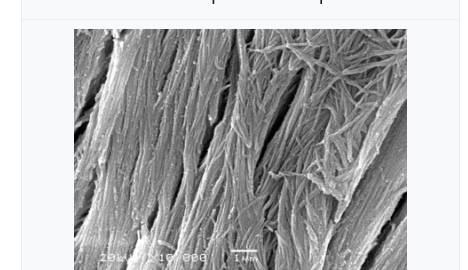Bone tissue (osseous tissue), which is also called bone in the uncountable sense of that word, is hard tissue, a type of specialized connective tissue. It has a honeycomb-like matrix internally, which helps to give the bone rigidity. Bone tissue is made up of different types of bone cells. Osteoblasts and osteocytes are involved in the formation and mineralization of bone; osteoclasts are involved in the resorption of bone tissue. Modified (flattened) osteoblasts become the lining cells that form a protective layer on the bone surface. The mineralized matrix of bone tissue has an organic component of mainly collagen called ossein and an inorganic component of bone mineral made up of various salts. Bone tissue is mineralized tissue of two types, cortical bone and cancellous bone. Other types of tissue found in bones include bone marrow, endosteum, periosteum, nerves, blood vessels and cartilage.Bones serve a variety of mechanical functions. Together the bones in the body form the skeleton. They provide a frame to keep the body supported, and an attachment point for skeletal muscles, tendons, ligaments and joints, which function together to generate and transfer forces so that individual body parts or the whole body can be manipulated in three-dimensional space (the interaction between bone and muscle is studied in biomechanics).Mechanically, bones also have a special role in hearing. The ossicles are three small bones in the middle ear which are involved in sound transduction.
What foods are good for your bones?
To keep your bones in great condition, you should enrich your diet with these foods:
1. Dairy products. Milk, hard cheeses, yogurt, and cottage cheese are the main suppliers of calcium. They also contain vitamin D, which helps this element to be absorbed.
2. Greens. Spinach, celery all types of cabbage. In addition to calcium, they are rich in vitamins B, E, and PP.
3. Fish. It contains vitamin D, phosphorus, and omega-3 fatty acids, which are necessary for calcium absorption.
4. Cereals and legumes. In addition to calcium, bones and joints need magnesium, which is found in wheat bran, cereals, and beans.
Magnesium, zinc, phosphorus, manganese, and copper should also be in the diet.


